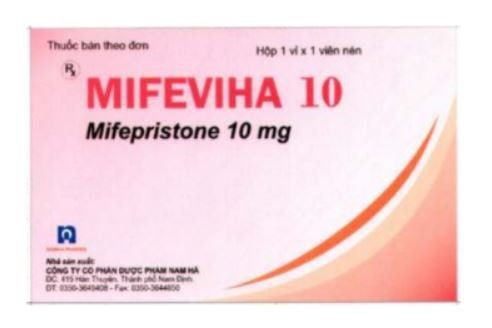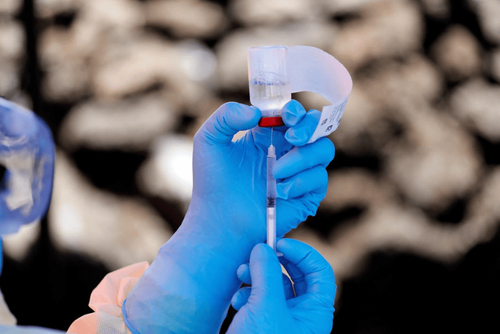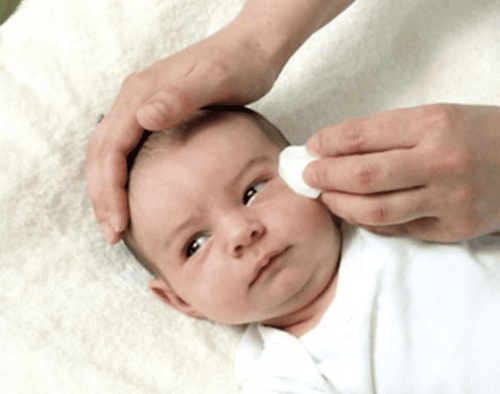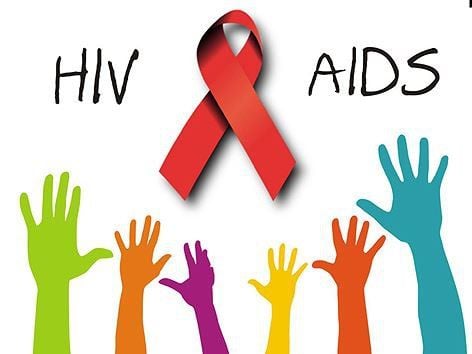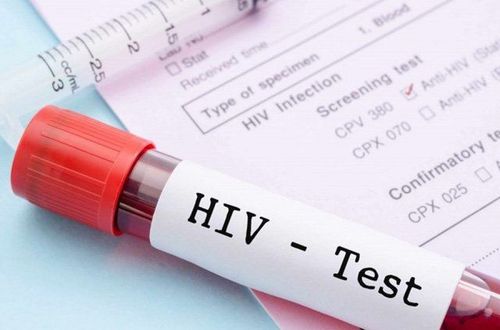This is an automatically translated article.
Posted by Doctor CKII Pham Thi Van Hanh - Pediatric Center - Vinmec Times City International Hospital
Up to now, there is no specific treatment for HIV disease, so learning about preventive interventions for people living with HIV plays a very important role, helping to reduce the infection rate and reduce the risk of HIV infection. complications caused by the disease.
1. Behavioral change communication
Individual counseling, leaflets, seminars on infection risks, prevention measures, knowledge, benefits of behavior change, benefits of routine HIV testing and early ART, build skills for high-risk groups to help them practice safe behavior and maintain protective behaviors
2. Use of antiretroviral drugs for HIV pre-exposure prophylaxis (PrEP)
(PrEP) -Use of antiretroviral drugs to prevent HIV infection in people who are not HIV-infected but have high-risk behaviors for HIV infection. PrEP is a new preventive measure used according to HIV/IDS treatment and care guidelines (Decision 5456/QDBYT - November 20, 2019). PrEP is 96-99% effective in preventing HIV infection with adherence. (PrEP can be used: Daily PrEP and situational PrEP).
When using PrEP, doctors who specialize in HIV/AIDS care and treatment must directly consult, assign, monitor, re-examine, handle unusual situations, provide psychological and social support, adherence to treatment and other medically necessary services.

Thuốc kháng virus được sử dụng trong điều trị dự phòng trước phơi nhiễm HIV
3. HIV Post-Exposure Prophylaxis (PEP)
PEP is to give antiretroviral drugs to people who are exposed to HIV. Post-exposure treatment should be initiated as soon as possible and no later than 72 hours. Exposure can occur in occupational and external environments. The HIV post-exposure prophylaxis process consists of the following 7 steps:
Step 1: Treat the wound on the spot Step 2: Report in charge and make a record (occupational exposure) Step 3: Assess risk according to extent of injury and area of exposure Step 4: Test to determine HIV status of the source of exposure Step 5: Determine HIV status of exposed persons Step 6: Counsel exposed persons about risk of HIV, hepatitis B, C. Benefits of ARV prophylaxis, adherence, and side effects Step 7: Prescribing 28-day PEP for people at risk Table 1. Prophylactic treatment after exposure to HIV with antiretroviral drugs
| Đối tượng | Phác đồ thuốc ARV |
| Người lớn | TDF + 3TC (hoặc FTC) + DTG (ưu tiên) hoặc TDF + 3TC (hoặc FTC) + LPV/r (thay thế) hoặc TDF + 3TC (hoặc FTC) + RAL (thay thế) |
| Trẻ em ≤ 10 tuổi |
AZT + 3TC + DTG (ưu tiên nếu có sẵn liều DTG đã được phê duyệt) hoặc AZT + 3TC + LPV/r (thay thế) hoặc AZT + 3TC + RAL (thay thế) |
Duration of post-exposure prophylaxis : Start treatment as soon as possible. Do not treat after exposure for more than 72 hours. Duration: full 28 consecutive days of treatment.
4. Prevention of tuberculosis and some common opportunistic infections
People living with HIV are very susceptible to TB, which is the leading cause of death in HIV. At the same time, HIV also increases the number of people with TB, increases the rate of drug-resistant TB and increases the death rate from TB, so everyone with HIV must prevent TB
TB prevention: HIV treatment facilities need to do 3 strategies include: Actively detecting TB; Treatment of latent TB; Control TB infection. Early ART for people living with HIV will reduce TB incidence as well as TB mortality, especially when latent TB is treated with anti-tuberculosis drugs.

Người bệnh nhiễm HIV cần được thăm khám và điều trị theo đúng phác đồ
Implement classification of patients to be examined, giving priority to patients with suspected TB. Quickly identify suspected TB cases, early diagnose and treat TB in time to apply isolation.
Use appropriate preventive measures for health workers, if TB is suspected, it is necessary to diagnose, treat early, register and report occupational diseases.
Waiting area or examination area should be well ventilated (natural ventilation or use of fans in the right direction); Cough hygiene messages should be clearly displayed in areas with large numbers of sick people.
5. Prophylactic treatment of some opportunistic infections for people living with HIV
Prophylaxis with co-trimoxazole : Prophylactic treatment with co-trimoxazole (CTX) is effective in preventing some opportunistic infections such as Pneumocystis jiroveci pneumonia, Toxoplasmosis and some other bacterial infections. . Prophylaxis of CTX is recommended for adults, pregnant and lactating women, and children exposed to or infected with HIV.
Cryptococcal prophylaxis: Cryptococcus antigen (CrAg) screening and early prophylaxis with fluconazole help prevent progression to meningitis in asymptomatic HIV carriers of Cryptococcus antigens.
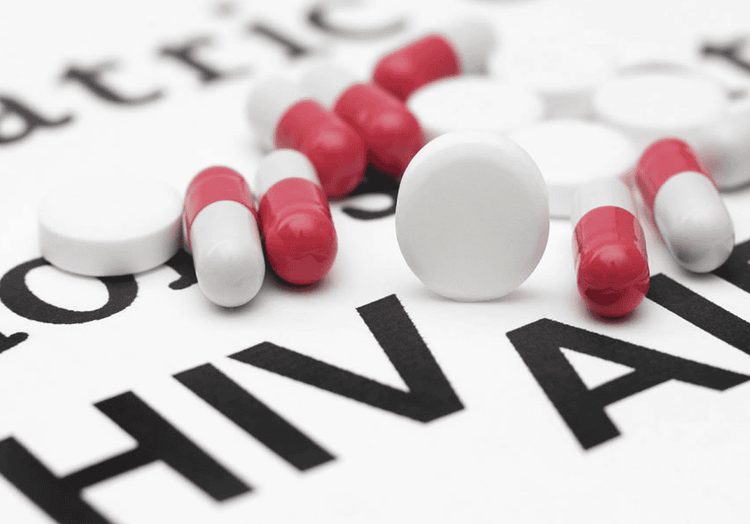
Người bệnh được điều trị dự phòng theo phác đồ của bác sĩ điều trị
6. Vaccinations
The HIV virus weakens the immune system, reducing resistance, so people with HIV are very susceptible to infections. Immunization according to the guidelines will help people living with HIV prevent infections, combined with a healthy lifestyle, eating and drinking enough nutrients, hygiene, personal hygiene measures, exercise. reasonable will help people living with HIV stay healthy, ensure long-term quality of life.6.1 Immunization of HIV-exposed and HIV-infected children
Children exposed to and infected with HIV need to be vaccinated according to the same schedule as any other child, but care should be taken when administering live vaccines such as: BCG and other live vaccines (polio, measles, rubella)Children exposure to HIV Get BCG vaccine when there is no conclusive evidence of HIV infection. Closely monitor children after BCG injection, detect diseases caused by BCG injection: ulceration at injection site, lymphadenitis, diffuse BCG disease (corrosion, hepatosplenomegaly).
Postpone BCG injection for children weighing < 2000g or with clinical signs of HIV infection until HIV status is confirmed.
Children exposed to HIV if not receiving mother-to-child transmission prophylaxis and/or children with confirmed HIV infection: Do not inject BCG
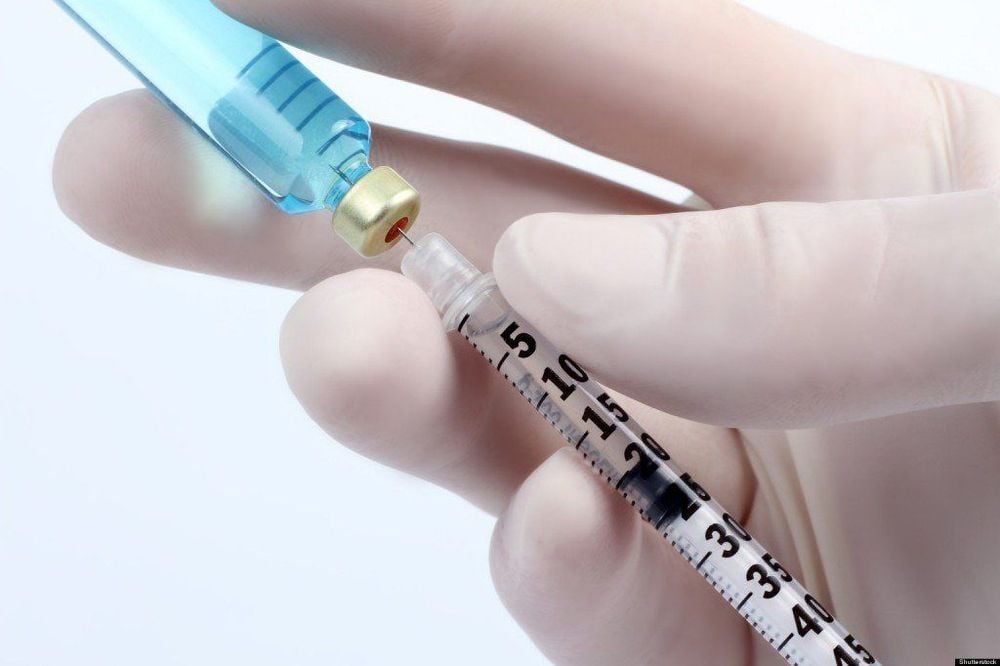
Trẻ phơi nhiễm và trẻ nhiễm HIV được tiêm chủng vắc-xin theo đúng khuyến cáo của tổ chức y tế
Children infected with HIV Defer the use of live vaccines if the child shows severe HIV infection, CD4 cells < 15% or is at clinical stage 4. After stable ART and clinical improvement, vaccinate the child. schedule as a child without HIV.
6.2 Immunization of HIV-infected adults
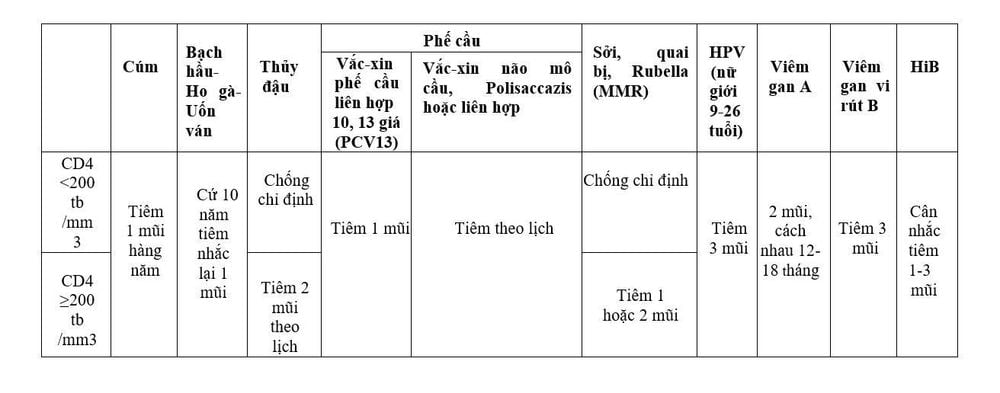
Bảng 2: Lịch tiêm chủng cho người lớn nhiễm HIV
Note: Live vaccines (measles, mumps, rubella, chickenpox): Do not give HIV infection when CD4 count < 200 cells/mm3 or/and GLS 4. When the patient is on stable antiretroviral therapy, You can continue to vaccinate as you would a person without HIV.
Other vaccines: vaccinate like people without HIV.
There was a time when HIV infection was considered dead. Currently, prevention and treatment interventions have improved the quality of life for people living with HIV.
Like people with other chronic diseases, people living with HIV can live a healthy life and have healthy babies when they are on ART and have good treatment adherence, stay healthy, and take measures seriously. Prophylaxis, especially the need for full vaccination.
Vinmec International General Hospital offers a Package of Examination and Screening for social diseases to help customers detect diseases early and have effective treatment and prevent dangerous complications. The screening package for social diseases at Vinmec is for all ages, both men and women.
Please dial HOTLINE for more information or register for an appointment HERE. Download MyVinmec app to make appointments faster and to manage your bookings easily.





